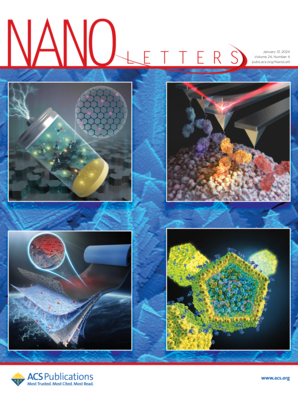Co-linear Hexa-Mirror-Based Multi-Periodic Structured Illumination Microscopy
IF 9.6
1区 材料科学
Q1 CHEMISTRY, MULTIDISCIPLINARY
引用次数: 0
Abstract
Structured illumination microscopy (SIM) is a robust wide-field optical nanoscopy technique. Several approaches are implemented to improve SIM’s resolution capability (∼2-fold). However, achieving a high resolution with a large field of view (FOV) is still challenging. We present tilt-mirror-based multi-periodic SIM for large-FOV super-resolution microscopy. The sample is illuminated by a multi-periodic structured pattern generated by six-beam interference using a custom-designed mirror mount. We achieve 3.16-fold resolution improvement while using a 20×/0.40 numerical-aperture objective that supports a large FOV (0.53 mm × 0.34 mm). This overcomes the high-space-bandwidth product challenge, achieving 9.98-fold improvement. mMP-SIM decouples illumination and collection paths, enabling scalable super-resolution over a large FOV. By using a 28×/0.80 numerical-aperture objective lens, an optical resolution of 170 nm over a 0.40 mm × 0.25 mm imaging area is demonstrated. The proof-of-principle experimental demonstration is performed for both fluorescent beads and a biosample like U2OS (human bone osteosarcoma) cells.

求助全文
约1分钟内获得全文
求助全文
来源期刊

Nano Letters
工程技术-材料科学:综合
CiteScore
16.80
自引率
2.80%
发文量
1182
审稿时长
1.4 months
期刊介绍:
Nano Letters serves as a dynamic platform for promptly disseminating original results in fundamental, applied, and emerging research across all facets of nanoscience and nanotechnology. A pivotal criterion for inclusion within Nano Letters is the convergence of at least two different areas or disciplines, ensuring a rich interdisciplinary scope. The journal is dedicated to fostering exploration in diverse areas, including:
- Experimental and theoretical findings on physical, chemical, and biological phenomena at the nanoscale
- Synthesis, characterization, and processing of organic, inorganic, polymer, and hybrid nanomaterials through physical, chemical, and biological methodologies
- Modeling and simulation of synthetic, assembly, and interaction processes
- Realization of integrated nanostructures and nano-engineered devices exhibiting advanced performance
- Applications of nanoscale materials in living and environmental systems
Nano Letters is committed to advancing and showcasing groundbreaking research that intersects various domains, fostering innovation and collaboration in the ever-evolving field of nanoscience and nanotechnology.
 求助内容:
求助内容: 应助结果提醒方式:
应助结果提醒方式:


